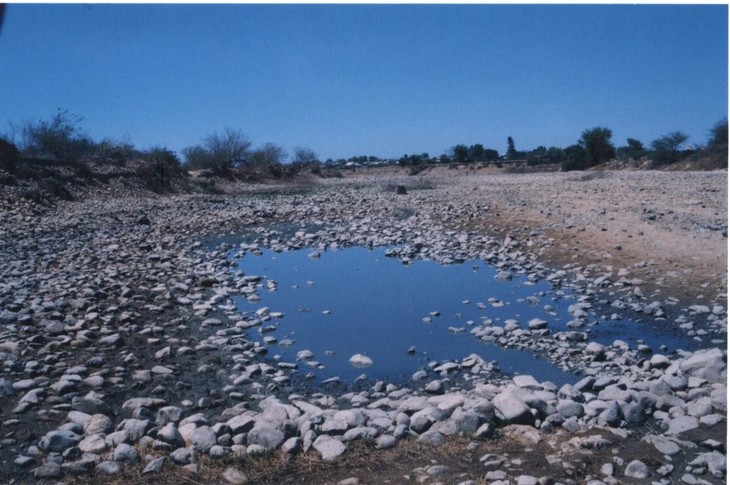(VOVworld) – Risk management caused by natural disasters and response to climate change are the biggest challenges for many countries in the 21st century. Vietnam is not exceptional. To minimize negative impacts of climate change, it’s necessary to gather all resources to promptly respond and overcome consequences when calamity takes place. VOV’s Minh Long reports on how Ninh Thuan, one of provinces to suffer severe losses by drought and saline intrusion, has combined international resources to deal with climate change.
 |
Rivers and streams in Ninh Thuan province in the dry season.
(Photo: baotainguyenmoitruong.vn) |
The drought spell from late 2014 to June 2016 is the fiercest period for Ninh Thuan over the past 11 years. At the worst time, almost 5,800 households with 25,200 people were in emergency need of fresh water for daily activities; more than 31,000 households with 130,000 people suffered from hunger.
Ensuring safe water, environmental sanitation, and taking care of children are practical acts that Ninh Thuan agencies at all levels are stepping up in response to climate change.
Dang Kien Cuong, Deputy Director of the provincial Agriculture and Rural Development Department, said in 2017 when part of the main canal of Tan My dam in the lower section of Cai River, Ninh Son district, is completed, it will ensure water supply for about 2,000 hectares of agricultural production land.
According to Cuong, “Apart from investment by the central government, aids from foreign organizations are very significant for the province to soon restore production. Ninh Thuận is deploying a water supply system for drought-hit areas in Thuận Bắc, Ninh Hải, and Thuận Nam districts through which to improve the public awareness of proactively responding to climate change and saving safe water in daily activities and production.”
As a poor province, Ninh Thuan has taken advantage of emergency aids provided by international organizations for the recent drought for calamity preventive activities, especially for the most vulnerable subjects including women, children in extremely advantaged areas. Skills on natural disaster response have been put to curricula in many schools in Ninh Thuan.
Le Thi Tien, Director of the Phuoc Tien Commune’s Kindergarten in Bac Ai district, said: “We have outlined a plan based on the types of natural disasters that can easily cause danger for pupils in each school to introduce into the curricula instructions and skills on disaster response. In separate schools, disaster risks are mainly torrential rains. In that case, teachers will help students how to recognize and avoid flood, not to go through flood-stricken areas and not to go out when there is rainstorm.”
Deputy Minister of Agriculture and Rural Development Hoang Van Thang said the efficient mobilization and use of international resources play an important role in improving the capacity in natural disaster response.
“International cooperation is very important in mobilizing financial resources and sharing experience from foreign partners to improve our capacity in calamity response,” Thang added.
To reduce natural disaster risks, the Ministry of Agriculture and Rural Development is compiling a draft to the National Strategy for Natural Disaster Prevention, Response, and Mitigation by 2020 as Vietnam is impacted by climate change and sea level rise with focus on improving forecast capacity for various kinds of natural disasters regulated in the Law on Natural Disaster Prevention and Control and warning capacity for calamities which occur in high frequencies.